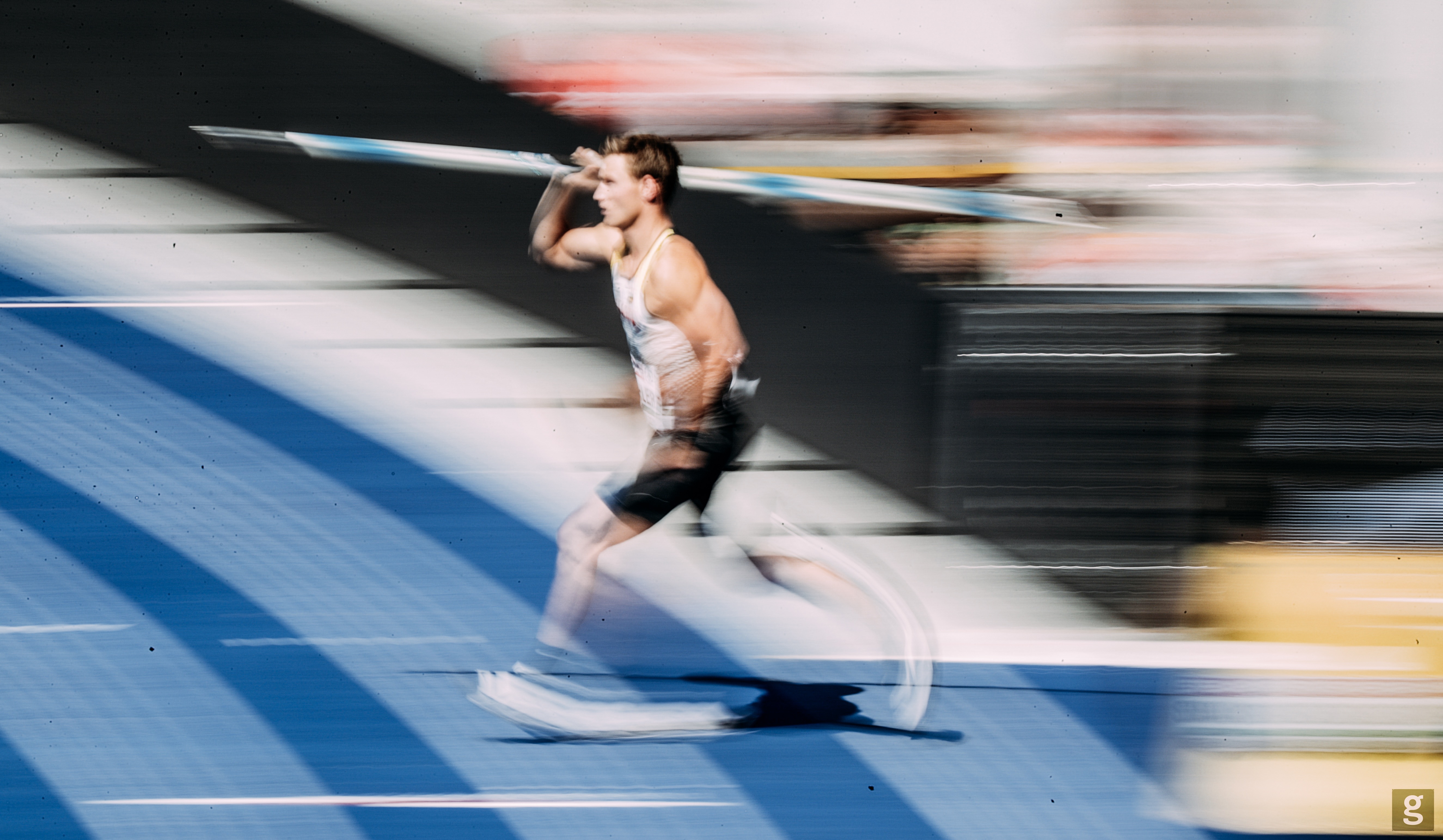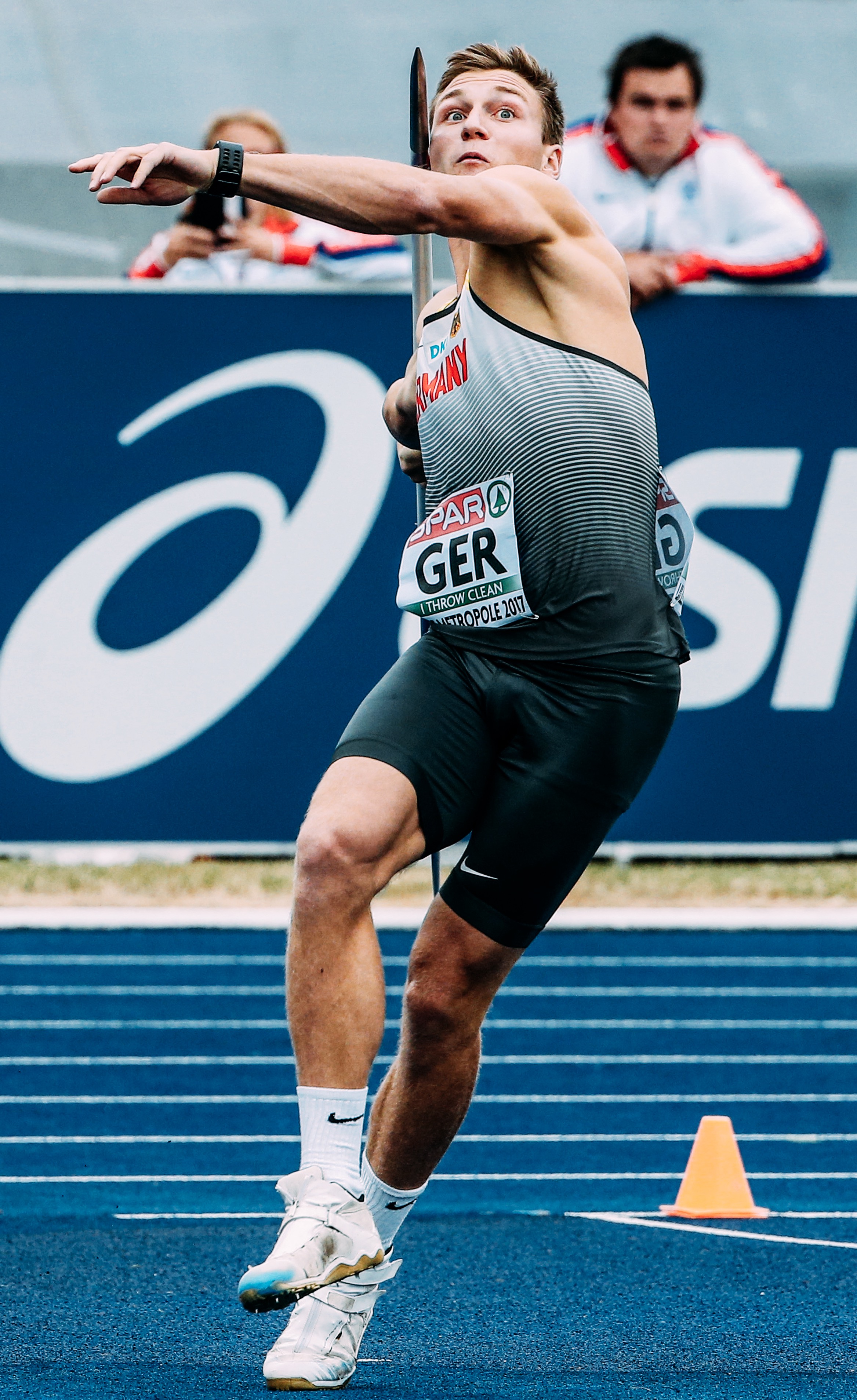It’s like many things, with a little momentum it just gets better. It’s the same in javelin throwing too. Today we look at how to get optimal momentum for the long throw. The javelin throw run up is less complex than the throw itself, but has great potential and different sources of error.
Step by Step
Meanwhile I’m next to Magnus Kirtfrom Estonia one of the world’s fastest runners looking at the javelin run up. In this blog you will notice that I do not make tempo the norm and that no masters have fallen from the sky.
If you start with the javelin throwing you usually bring a few valuable athletics basics. These should also be used specifically during start-up training. In order to be able to focus directly on quality, the start-up should be a solid part of the training and not just a random spear-jerking practice as practiced in many clubs. The first thing to do is to get started according to your own level of performance.
Crossovers are basis for the run up
No matter on 3, 5, 7 or 9 rhythm, always starts with a long arm and acyclic javelin throw. That is, the spear is set correctly and is relaxed with a long arm in the throwing hand. Now, the athlete is slightly laterally with the hips closed to the casting direction in order to perform optimal cross steps can. Attention! In javelin throwing is crossed only in front, this often causes difficulties for beginners. Video studies and cross-steps in walking help to promote the movement.
As soon as the movement pattern is seated, speed is added, the startup should finally fulfill the purpose of pre-acceleration. Critical for short starts without cyclical part is always the will to quickly generate a lot of speed. The steps are usually long and move too far from the body’s center of gravity. To achieve a stable upper body position should be paid to slightly stiff knees and more frequent steps in a relaxed rhythm.
Impulse prepares the throw
If all cross-steps have been carried out in an active and accentuated manner and the ejection line moves closer, it is time for the pulse step. The last start step before the position throwing. In the impulse step, the athlete expresses as actively as possible from the leading leg (later Stemmbein). Many throwers take the impulse initially as a small jump true, that’s not bad, important is an optimal length and low altitude because otherwise valuable energy is lost. The pressure leg should land at the level of the throwing shoulder / hip for optimum timing with the bale in the throwing direction.
Cyclic start-up part in the javelin throw run up
Once you have gained more experience as a javelin thrower in the stable spearhead control and the additional task of running you can bring more energy into the running. The approach with 7 or 9 cross steps is exhausted in the sense of acceleration possibilities. Now it’s time to take a ride in normal sprints and smoothly go into the cross steps. Liquid implies another feature. The transition of the spear from the “carrying position with bent arm” in the again elongated position. We call this step returning the spear or, shortly, repatriation. Here time should be invested in spear throw training until the transition is good.
Find the javelin run up optimum
It is not necessary to specify exactly how the cyclical start-up steps should be executed. But running styles are too individual. The goal is all to generate a liquid, increasing acceleration to the discharge. Many young javelin throwers are helped by a slightly exaggerated knee to keep an upright body position in line. Depending on the level of performance and coordinative skills, we speak of completely different speeds. Some athletes take the spear at 4m / s, another with an enormous 8m / s. In the end, the hip acceleration counts as you read in the article on the javelin throwing technique hip acceleration.
How long the run up must be is often more of a question of how long it takes to mentally prepare for the dropoff. We are all able to accelerate faster than we do at the competition start. It is important not to give up a hunt at start-up, otherwise the impulse step becomes mostly chaotic and the throw itself unclean.
Detailed info on the optimum pace and speed control can be found in this article.
The orientation in the run up
Unfortunately, orientation skills are often forgotten when the javelin athlete starts. On small sports fields it’s about keeping the line on the javelin throwing track. Later, the stadiums become louder and louder, which definitely has an effect on the start. Javelin throwers can take precautions here and use visual targets, acoustic signals or visual restrictions during training.
My exercises for a perfect javelin run up
Orientation and spear pull back while walking
- View in throw direction
- Training the movement concept
Overspeed Crossovers
- Maximum frequency or speed with the spear
Coordination leader with spear
- Obstacles and rhythm variations with or without spear
For Professionals: No Sandpit Games
In the high performance range it has been found that standing throws and throws from one to three steps are nothing more than a nice warming or feeling training. The time window in which all throwing movements are carried out in competition is very small and that is where training must begin. The speed of the start in training without throw should therefore always be a small step ahead of the start with throw of the spear. Why? We all want to throw on and we have to work not only on technical stability but also on our ability to coordinate high speeds.

